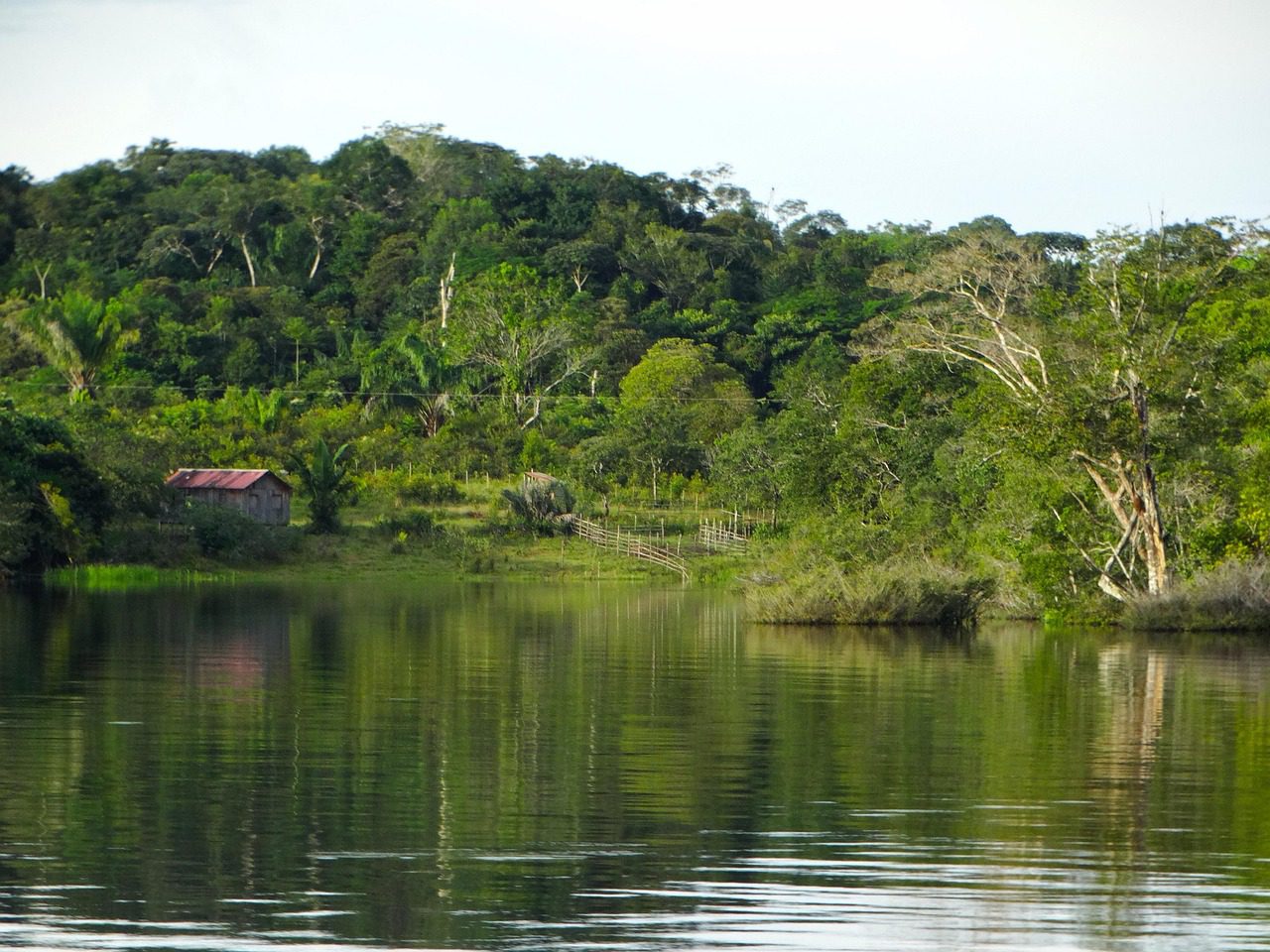Business and finance: prioritise a nature-positive Amazon

The Amazon rainforest is often called the “lungs of the Earth,” producing 20% of the world’s oxygen and hosting an unparalleled range of biodiversity. But beyond its ecological importance, the Amazon has deep economic significance. It supports millions of livelihoods, regulates the global climate, and fuels industries such as agriculture, pharmaceuticals, and eco-tourism.
However, ongoing deforestation, unsustainable mining, and aggressive agricultural expansion threaten both its natural ecosystem and the long-term economic value it generates. As businesses and financial systems increasingly acknowledge environmental, social, and governance (ESG) factors, there is a growing call to prioritise a nature-positive approach to the Amazon.
In this article, we’ll explore how businesses and the finance sector can play a leading role in protecting the Amazon, why it matters for global markets, and practical strategies for aligning economic growth with environmental restoration.
Understanding “Nature-Positive” in the Amazon Context
A nature-positive approach goes beyond simply “doing less harm.” It focuses on actively restoring and regenerating ecosystems while ensuring that economic activities remain profitable and sustainable.
For the Amazon, this means:
- Halting deforestation and illegal land clearing.
- Restoring degraded lands to their natural forest cover.
- Supporting indigenous communities who have safeguarded the forest for generations.
- Promoting sustainable business models that generate income without depleting resources.
Nature-positive business is not charity—it’s a future-proof investment strategy that recognises nature as a valuable asset class.
The Financial Stakes of a Degraded Amazon
If the Amazon ecosystem collapses, the consequences will ripple far beyond South America. Here’s why businesses and investors should care:
- Climate Regulation Loss
The Amazon stores around 90–140 billion metric tons of carbon. Deforestation releases this into the atmosphere, accelerating climate change and increasing disaster-related financial risks for insurers, banks, and governments. - Biodiversity Collapse
More than 10% of known species live in the Amazon. Their loss would undermine global food security, biotechnology research, and pharmaceutical innovation. - Economic Productivity Decline
The rainforest’s role in regulating rainfall patterns supports agriculture across South America. A destabilised Amazon could lead to crop failures, reduced hydropower generation, and higher food prices. - Reputational Risks for Companies
In today’s ESG-focused market, brands linked to Amazon destruction risk consumer backlash, investor divestment, and regulatory penalties.
How Businesses Can Prioritise a Nature-Positive Amazon
1. Embed Nature in Corporate Strategies
Companies should assess their supply chains for links to deforestation, mining, or other harmful activities in the Amazon. Commitments like “zero deforestation” policies, traceable sourcing, and environmental certifications can significantly reduce impact.
2. Invest in Regenerative Agriculture
Businesses can partner with local farmers to implement agroforestry, organic farming, and soil-restoring techniques. This approach not only increases yields but also preserves biodiversity.
3. Support Indigenous Leadership
Indigenous communities have historically been the most effective forest stewards. By funding community-led land management, companies can protect biodiversity while ensuring equitable economic benefits.
4. Innovate in Green Finance
Financial institutions can design green bonds or sustainability-linked loans that reward companies for measurable conservation efforts. This aligns investor returns with environmental outcomes.
The Role of Finance in Building a Nature-Positive Amazon
Green Investments
Banks and asset managers can direct funds toward sustainable forestry, eco-tourism, and renewable energy projects in the Amazon.
Deforestation-Free Portfolios
Institutional investors can screen out companies engaged in illegal logging or destructive land use. This sends a strong market signal that environmental destruction is bad business.
Carbon Credit Markets
Responsible carbon credit programs allow companies to offset emissions by funding verified reforestation and conservation in the Amazon.
Risk Pricing
Insurers and lenders can price climate and deforestation risk into their offerings, making environmentally harmful projects less financially attractive.
Case Studies: Business Models that Work
- Açaí and Brazil Nut Cooperatives
These industries thrive without cutting down trees. Global brands sourcing from certified cooperatives ensure fair wages while keeping forests intact. - Eco-Tourism in Peru and Brazil
Guided nature tours generate revenue for local communities and incentivise preservation of wildlife habitats. - Reforestation Startups
Tech-driven reforestation projects use drones, AI, and blockchain to plant trees efficiently and track impact in real-time.
The ESG Imperative
Environmental, Social, and Governance (ESG) principles have moved from niche to mainstream investing. With the Amazon at a tipping point, nature-positive action is not just a moral duty but an ESG requirement. Companies that fail to act face:
- Capital flight as sustainability-focused investors pull out.
- Regulatory hurdles under emerging green compliance laws.
- Brand erosion in markets where consumers demand ethical sourcing.
Conversely, companies that lead in this space can gain competitive advantages, attract investment, and secure long-term operational stability.
Challenges to Overcome
While the vision for a nature-positive Amazon is compelling, businesses must navigate real obstacles:
- Weak Law Enforcement: Illegal logging and mining continue despite existing protections.
- Complex Supply Chains: Tracing raw materials back to source is still difficult for many industries.
- Short-Term Profit Pressures: Some investors and executives prioritise immediate returns over long-term sustainability.
- Community Inclusion: Without local buy-in, conservation programs often fail to take root.
Policy Partnerships: The Missing Piece
Governments in Amazon countries play a critical role, but they cannot succeed alone. Public-private partnerships can amplify conservation outcomes through:
- Tax incentives for sustainable businesses.
- Funding for research on climate-resilient crops.
- International trade agreements that reward deforestation-free exports.
By working with NGOs, indigenous councils, and academic institutions, businesses can align profit motives with environmental stewardship.
Why This Matters for the Future of Business
A healthy Amazon is not just an environmental cause—it’s an economic safeguard. It protects water systems, stabilises climate patterns, and fuels sustainable industries. Ignoring the Amazon crisis risks triggering a chain reaction of ecological, social, and financial breakdowns.
As global awareness of climate risks intensifies, markets will increasingly reward companies that act decisively in protecting the planet’s natural assets. Those that don’t adapt will find themselves left behind.
Practical Steps for Companies Right Now
- Audit Your Supply Chain for Amazon-linked deforestation.
- Set Public, Time-Bound Targets for reducing environmental footprint.
- Invest in Local Partnerships that support sustainable livelihoods.
- Adopt ESG Reporting Standards to track and communicate progress.
- Leverage Technology like blockchain for transparent sourcing.
Final Thoughts
Prioritising a nature-positive Amazon is not about choosing between profit and the planet—it’s about recognising that the two are inseparably linked. A degraded Amazon threatens the very economic stability that global markets rely on.
By embedding conservation into corporate strategy and aligning financial flows with sustainable development, businesses and investors can become powerful forces for regeneration. The choice is clear: companies can either be part of the problem or lead the way toward a thriving Amazon that benefits nature, people, and the economy.








